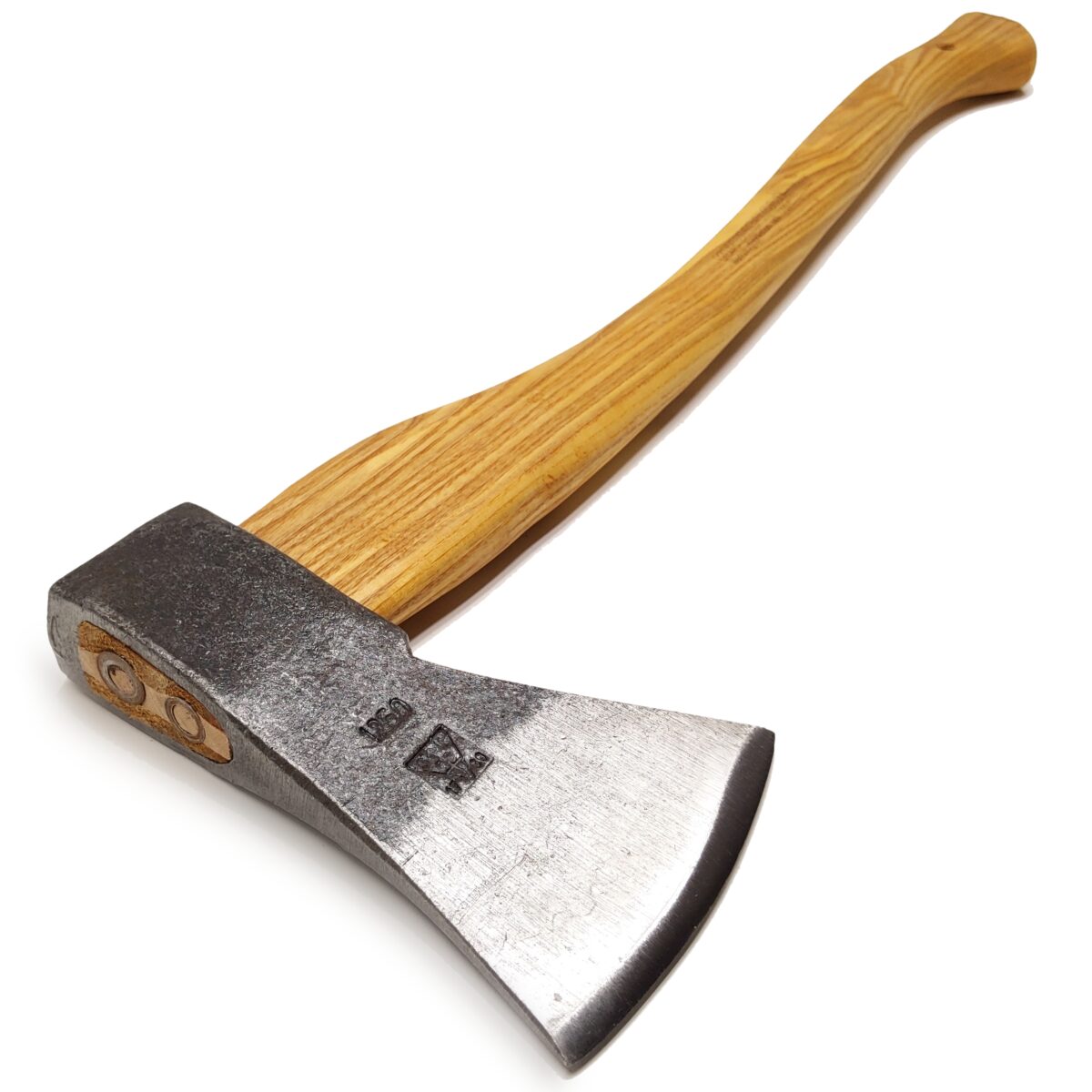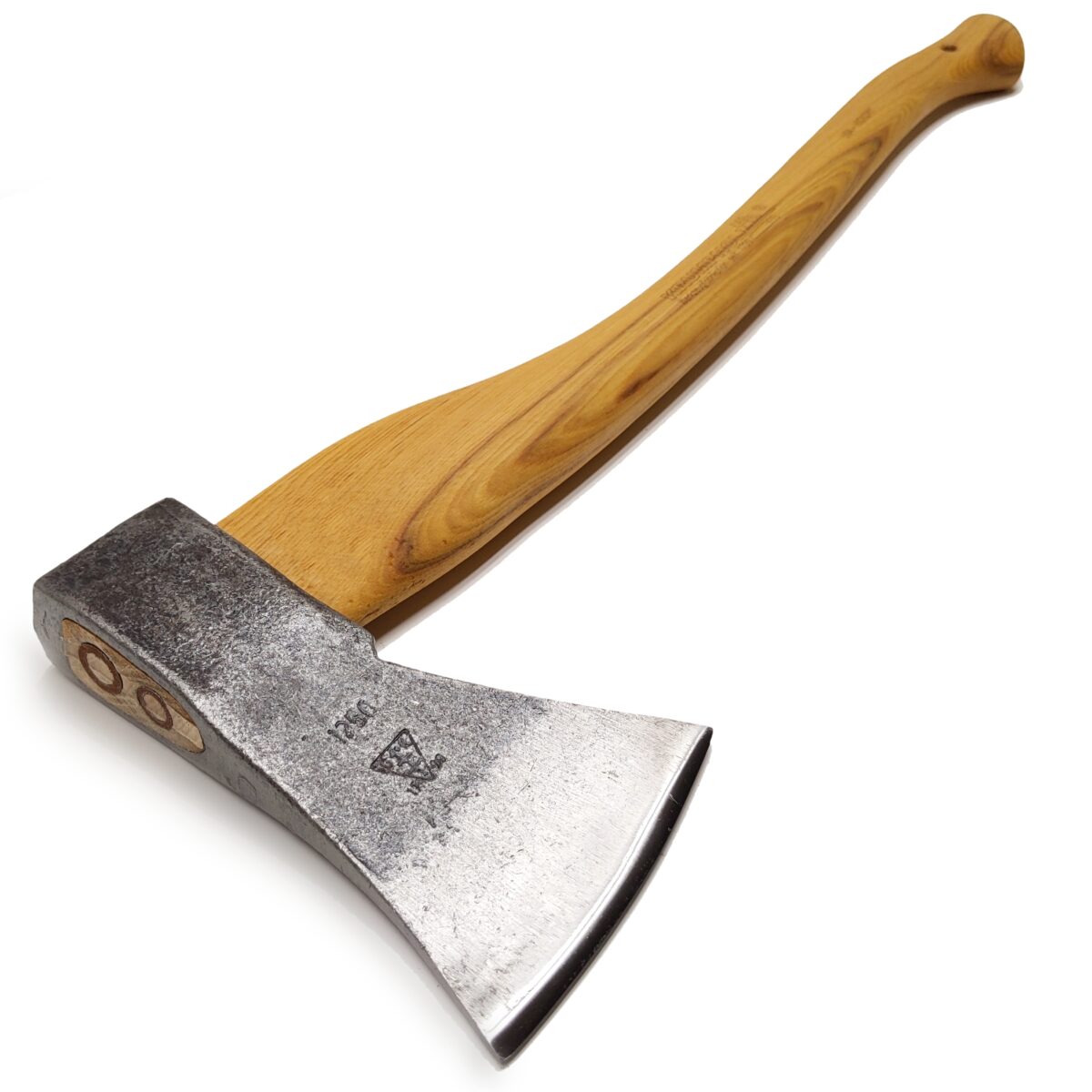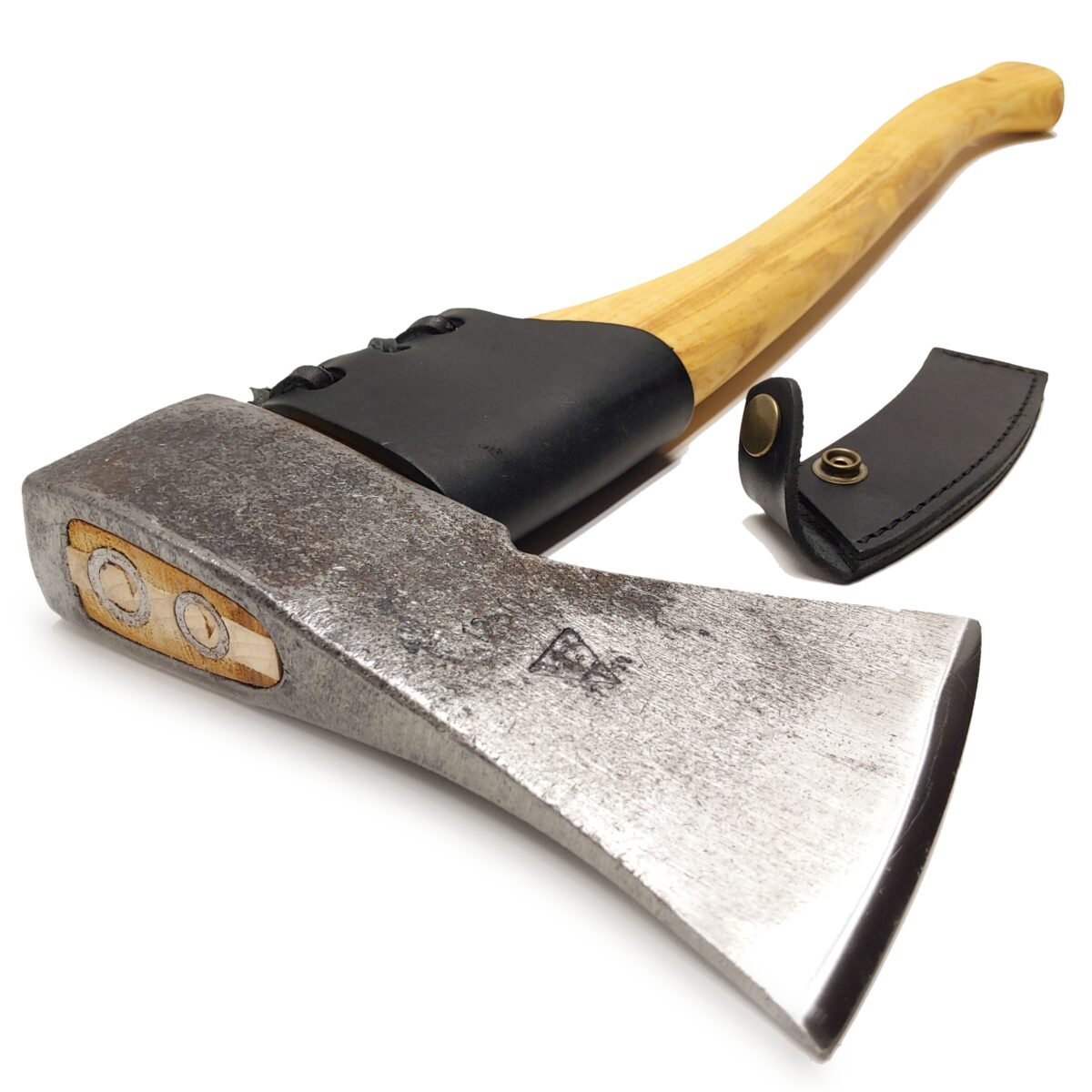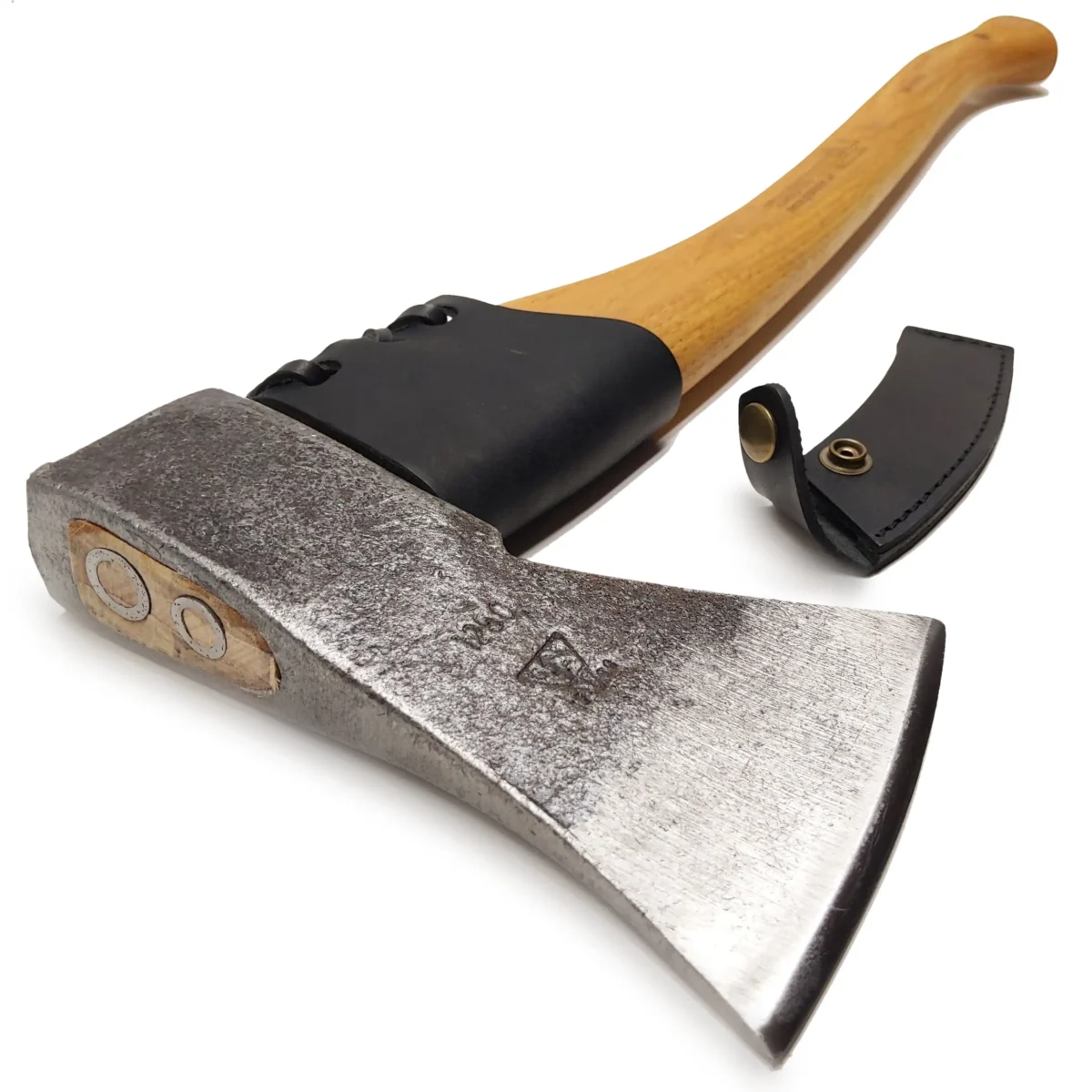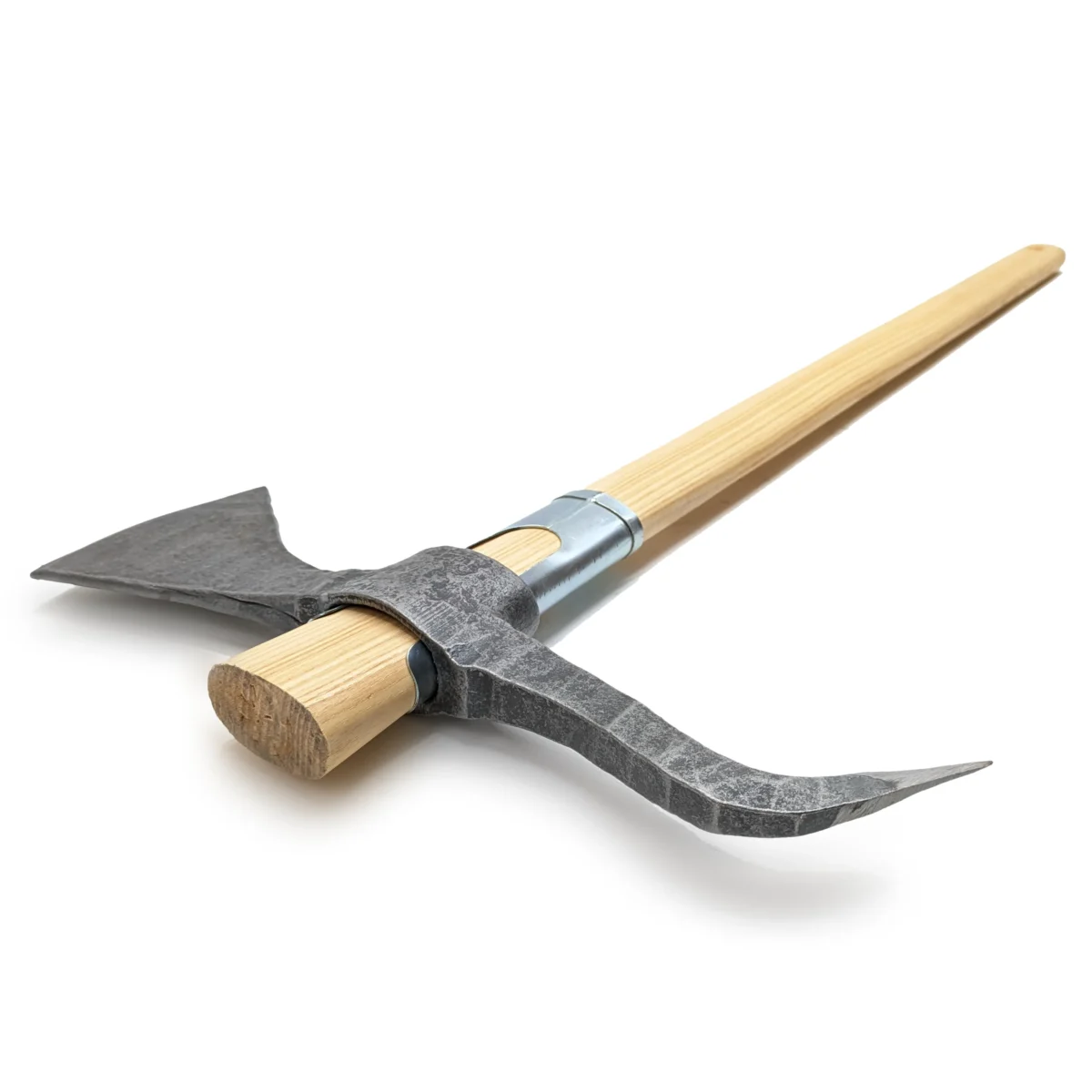Forestry axe or splitting axe? Differences and correct use!
Forestry axe or splitting axe – differences, correct use and special features
Whether for cutting firewood, forestry work or in the garden at home – axes have been one of man’s most important tools for centuries. Two types in particular are at the heart of woodworking: the forestry axe and the splitting axe. But which axe is suitable for which task? What are the differences? And what should you look out for when buying one? In this article, you will find out everything about the areas of application, features and correct handling of these two types of axe.
1 What is a forestry axe?
The forestry axealso known as a universal axe or felling axe, is a tool that has been specially developed for felling trees and limbing. It is primarily used in the forestry sector, but is also a versatile tool for other applications.
Features of a forestry axe:
Slim, sharp blade: Enables precise cuts across the wood grain (e.g. when felling).
Elongated head: The axe head is often narrow and elongated in order to penetrate deep into the wood.
Cutting edge: The cutting edge of the forestry axe is ground with a sharp cutting angle of 20 – 25 degrees. The sharpness of the blade is essential for the chopping performance.
Weight: The heads of the forestry axes usually weigh between 1 and 1.6 kilograms. The most commonly sold forestry axes have a head weight of 1.25 kg.
Handle length: The handle is usually between 60 and 80 centimetres long and provides good leverage. Lighter axes have a shorter handle and heavier axes are fitted with a longer axe handle.
Handle material: The handles are usually made of ash wood or hickory.
Handles made from ash wood are firm and elastic. Impacts are cushioned by the wood, which is easy on the joints. A complete breakage of the ash stem is rather rare, but occurs especially when the wood dries out. Ash handles are cheaper than hickory handles.
Hickory is a North American tree of the walnut genus. The wood is perfect for heavy-duty stems. It is strong, flexible, elastic and absorbs hard impacts well. Thanks to its long wood fibers, it can withstand a significantly higher load than the already stable ash wood. Hickory handles almost never break completely and therefore offer a safety advantage over ash handles.
Some with striking surface: Some models have a surface on the back for hammering in riving knives.
Areas of application:
Felling trees
Limbing of trunks
Chopping wood across the grain
2 What is a splitting axe?
The splitting axe, in the particularly heavy versions also called splitting hammer is specially designed for splitting wood along the grain. It is used in particular for the production of firewood.
Features of a splitting axe:
Wide, wedge-shaped blade: The weight and shape ensure that the axe splits the wood and pushes it apart.
Heavy head: Splitting axes usually weigh between 1.25 and 3 kilograms. The splitting axes we sell most frequently have a head weight of 2 kg.
Cutting edge: The cutting edge of the splitting axe has a robust grind with an angle of 25 – 30 degrees. The sharpness of the blade is not as important as on a forestry axe. The blunter cutting angle is less susceptible to damage than a sharp angle.
Stem length: The handle is usually between 60 and 90 centimetres long. Lighter splitting axes have a shorter handle and heavier splitting axes or splitting hammers are fitted with a longer axe handle.
Stem material: The handles are usually made of ash wood or high quality hickory made from ash wood.
Some with striking surface: Some models have a surface on the back for hammering in riving knives.
Areas of application:
Splitting firewood
Cutting medium to large pieces of wood
Preparing wood for storage or drying
3. the most important differences between a forestry axe and a splitting axe
| Feature | Forestry axe | Splitting axe |
|---|---|---|
| Blade shape | Slender, sharp, elongated | Broad, wedge-shaped |
| weight | Lighter (1 – 1.6 kg) | Heavier (1.25 – 3 kg) |
| Handle length | 60 to 80 cm | 60 to 90 cm |
| Direction of use | Across the grain (e.g. felling) | Along the grain (e.g. splitting) |
| Back side | Hammer surface | Hammer surface |
| Target group | Foresters, forestry workers, landscapers | Chimney owners |
4. tips for use: How to use your axe correctly
Use the forestry axe correctly:
Secure footing: Make sure you are standing firmly on the ground. A stable stance increases precision.
Targeted cuts: Work with crossed cuts in a V-pattern to cut through the wood in a targeted manner.
Safety clothing: If you make a mistake or slip, serious injuries are possible without protection. Therefore, wear safety clothing (e.g. cut protection trousers, helmet).
Regular resharpening: A sharp blade is a must for a forestry axe. Chopping across the grain is only a pleasure with a really sharp blade.
Use the splitting axe correctly:
Splitting on a chopping block: Always work on a raised and wide chopping block to achieve the correct working height and increase safety in the event of a miss.
Eye on the grain: Split along the natural grain direction – so splitting is quick and requires little force. Foresters say: “The wood that cracks like a bird shits!”
Accuracy before power: Concentrate on precise blows instead of brute force.
Use splitting wedges if necessary: For particularly hard, gnarled or knotty wood, a wedge driven in with a hammer or splitting hammer will help.
5. buying advice: What should you look out for?
For the forestry axe:
Handle material: Traditional wooden handles (e.g. ash wood or hickory) offer a good grip and leave no waste behind at the end of the axe’s life.
Non-slip handle: An ergonomic, non-slip handle is particularly important for safe working. Therefore, never work in the rain or with a wet axe handle.
Manufacturer: Brands like Krumpholz or Gränsfors stand for high quality and forge the axe heads from tough and high-quality carbon steel in the traditional way.
For the splitting axe:
Weight and size: Women and senior citizens like to use lighter splitting axes with shorter handles. Heavy splitting hammers are the right choice for breaking up large and heavy tree slices.
Non-slip handle: An ergonomic, non-slip handle is particularly important for safe working. Therefore, never work in the rain or with a wet axe handle.
Head shape: The head must be wedge-shaped. This creates the splitting effect when hammering and the wood fibers tear along their course.
6. care and safety
Clean after use: Remove resin, dirt and moisture after each use.
Keep sharp: Regular sharpening with a whetstone is essential, especially for forestry axes.
Store in a dry place: Store your axe in a dry and cool place, ideally with a blade guard.
Wear safety clothing: Safety clothing can protect you from serious injuries! Helmet, cut protection trousers, safety shoes and safety goggles offer a high level of safety.
7 Conclusion: Forestry axe or splitting axe?
The question “Forestry axe or splitting axe?” is easy to answer: It depends on the purpose.
For felling work, limbing and universal forestry tasks the forestry axe is the right choice.
For the cutting firewood and the splitting large pieces of wood and tree slices you need a splitting axe.
Anyone who regularly works with wood should have both types of axe in their tool arsenal. The right choice and handling not only saves time and energy, but also increases safety and efficiency when working with wood.
Is there an axe that is suitable for both jobs?
Krumpholz has a hybrid axe which is ideal for splitting firewood as well as felling and delimbing. The forestry and splitting axe has the head shape of a Viking axe and can achieve very high sharpness with the sharper cutting angle. The head thickens considerably at the back and develops a very good splitting effect there.
